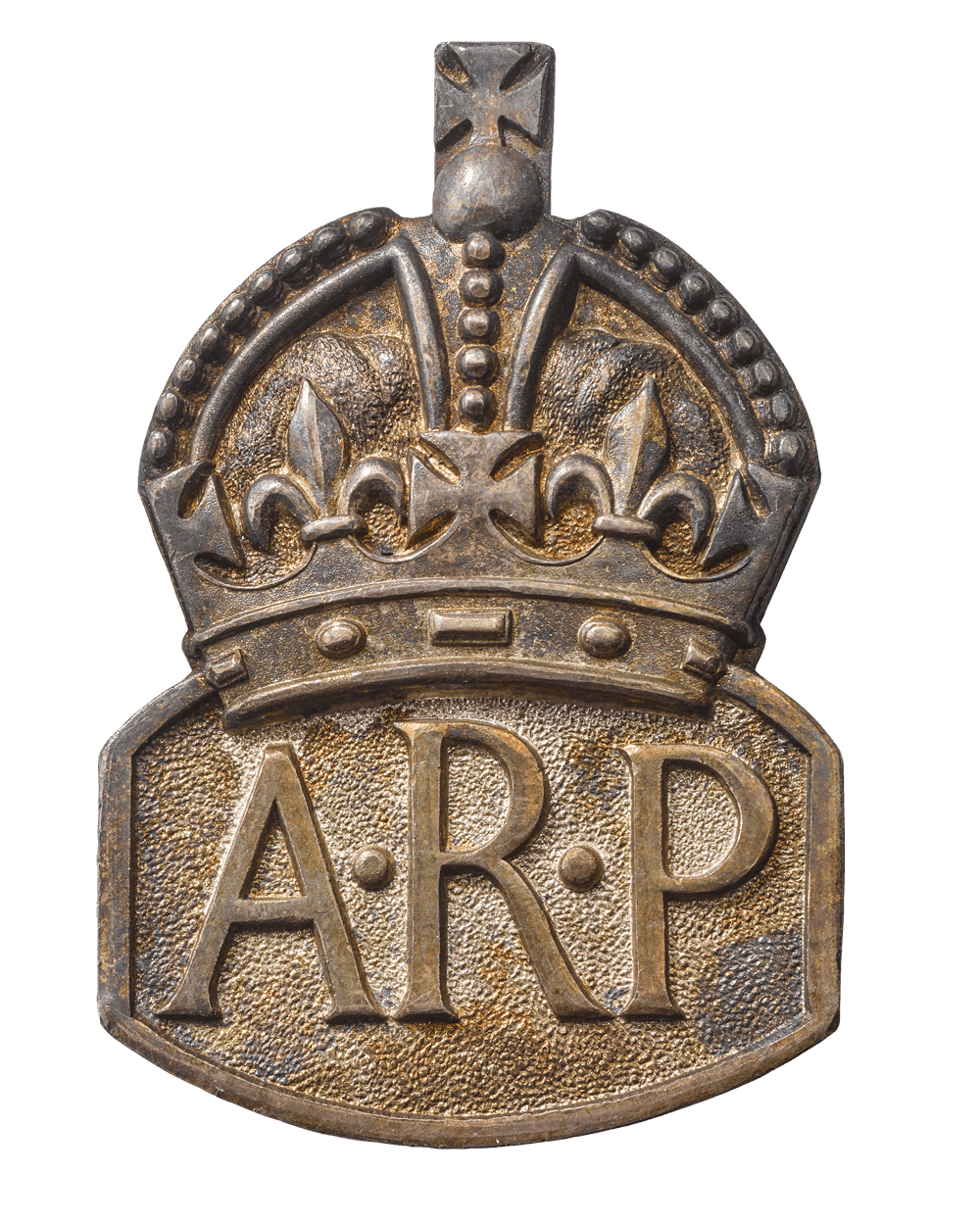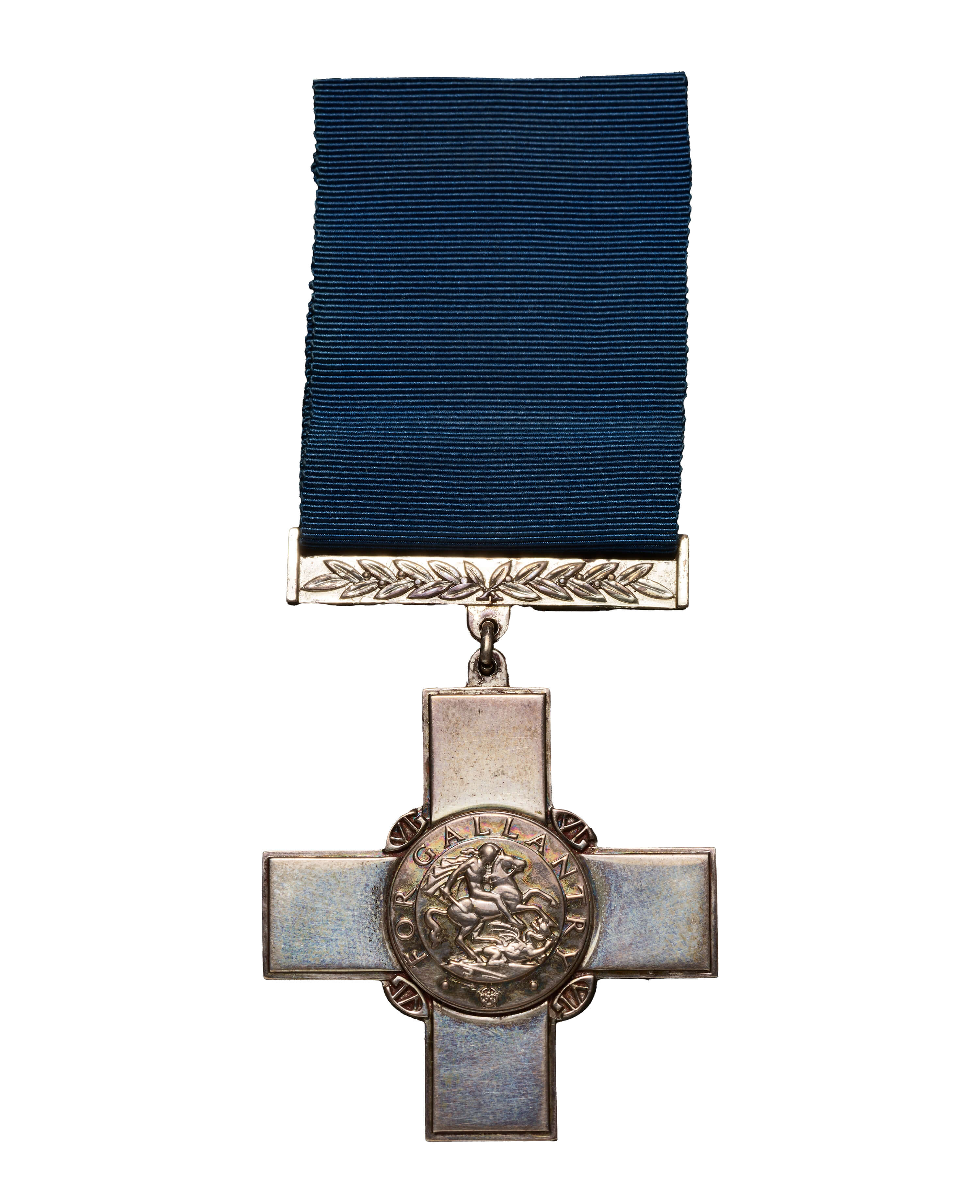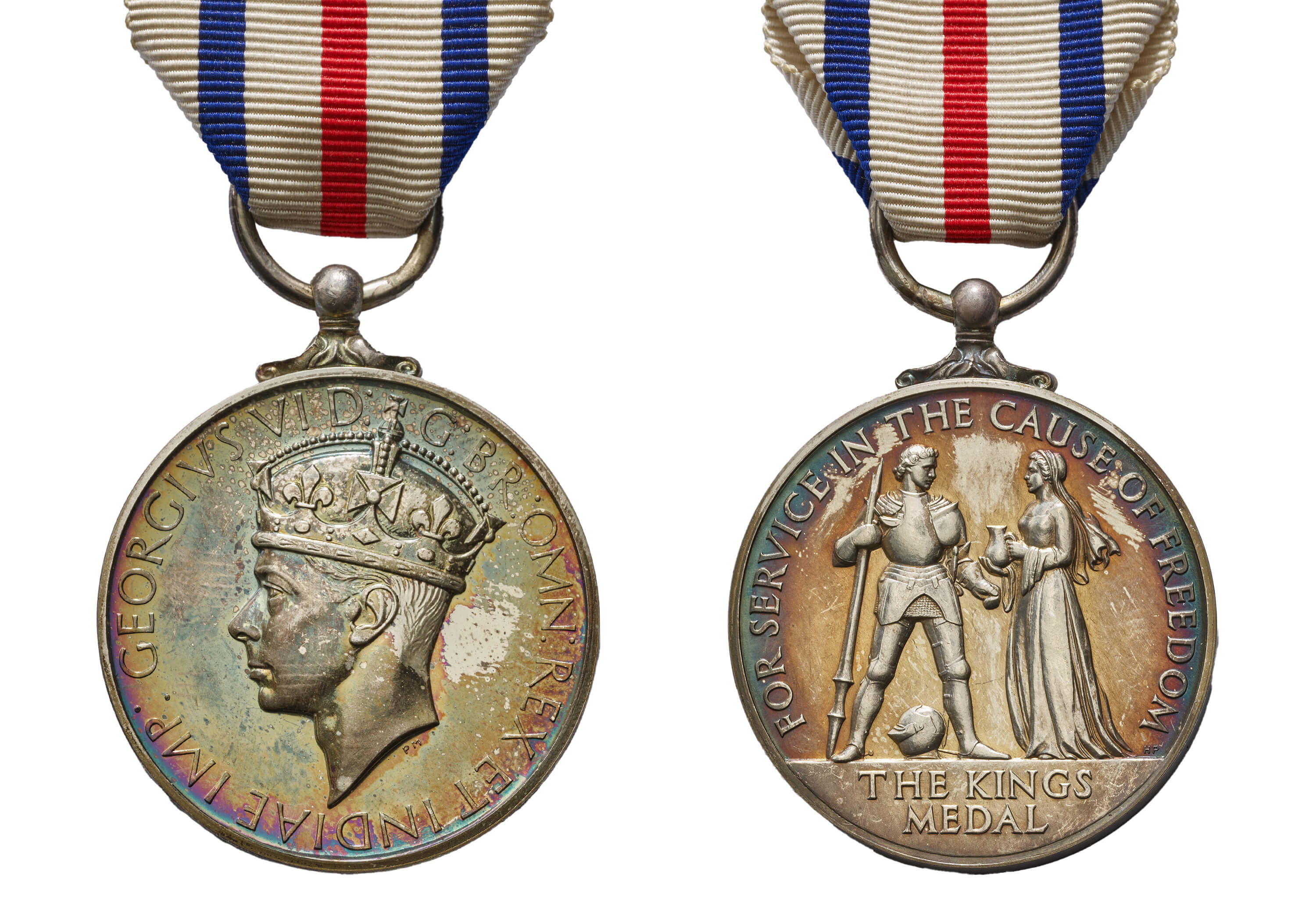Medals
Surprisingly, the amount of medal work undertaken by the Royal Mint did not rise dramatically during the Second World War. In order to save metal, the award of campaign and service medals was delayed until after the end of the conflict but the Mint was tasked with producing millions of buttonhole badges for the influx of people into the Auxiliary Services, the Merchant Navy and the ARP.

ARP (Air Raid Precautions) badge
The rain of German bombs on British cities from September 1940 led to many acts of courage by civilians on the ground. To rewards these actions, new medals were instituted towards the end of September – the George Cross and the George Medal. The designs draw from the legend of St George slaying the dragon and the Mint turned to existing artwork for inspiration. For the George Medal, heraldic artist George Kruger Gray adapted the Windsor Book Plate design by Stephen Gooden, RA but the George Cross was inspired by something much closer to home. Whilst it proved challenging, Percy Metcalfe modified the classic design from the sovereign to include in the centre of the cross. The work on this was not completed until the end of 1940 and the first award of the George Cross took place in May 1940.

George Cross Medal
Producing good quality and meaningful medal designs is never easy, particularly for such a charged and emotive conflict like the Second World War. This was especially the case when designing a medal to recognise the efforts of the foreign civilians, such as members of the French Resistance, who had contributed so much to the defeat of Hitler’s Germany. The King’s Medal for Service in the Cause of Freedom was conceived as a means of doing this and artists were initially asked to prepare a treatment of the Biblical story of the Good Samaritan in an effort to show how the recipients had helped those in need at a difficult time. Whilst fitting, the approach caused concerns amongst Foreign Office officials who were worried that this might lead to questions over which countries had walked by and ignored the cause. Instead, they wanted a vigorous depiction of St George slaying the dragon but, for the Royal Mint Advisory Committee, this was imagery too closely associated with England to be meaningful for an overseas audience. A characterless compromise was reached which depicted an armoured knight receiving a cup from a maiden and, in trying to please everyone, some of the original meaning behind the medal was lost in the final design.

King's Medal for Courage in the Cause of Freedom
In order to recognise the service of troops taking part in the varied theatres round the globe, eight Campaign Stars were instituted. The medal takes its name from its distinctive six-pointed star shape and the centre of each bears the Royal Cypher of George VI.

Atlantic and Italy Campaign Star Medals
Production began at the start of 1946 once enough labour and resources were available and, in order to ensure that the many millions of medals required could be made quickly, striking was split between the Royal Mint and the Royal Ordnance Factory, Woolwich. Between them, the two locations produced just under a million Stars in a year. Troops from around the Empire and Dominions were also entitled to these medals and, in order to ensure efficient production, master tooling to make these Stars for overseas troops was produced at the Royal Mint in London and despatched to mints in Australia, Canada, India and South Africa.
